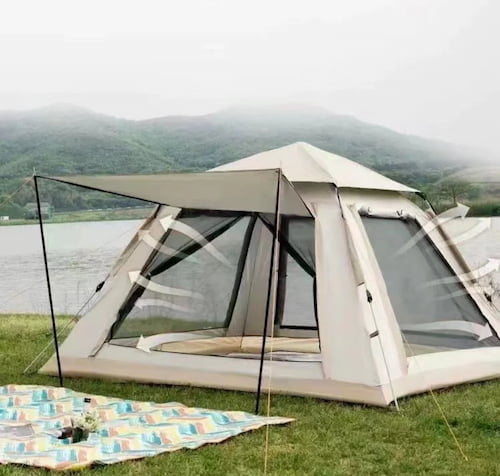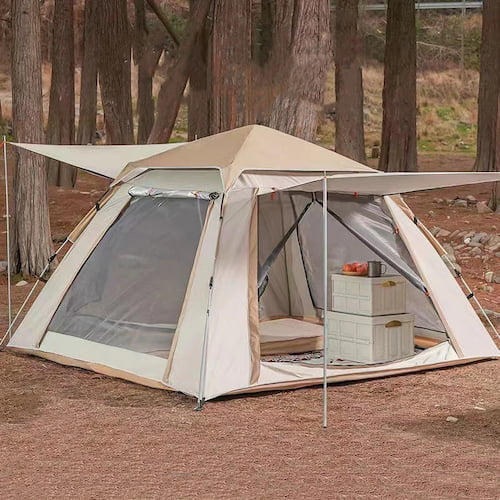Wild camping is an exhilarating experience that allows adventurers to disconnect from the modern world and immerse themselves in the beauty of nature. One essential item for a successful wild camping trip is a reliable and suitable tent. In this comprehensive guide, we will explore the factors to consider when choosing a tent for wild camping, including size and weight, durability, weather resistance, and ease of setup. Let's dive in and discover the perfect shelter for your next wilderness adventure.

Size and Weight:
When selecting a tent for wild camping, it is crucial to consider the size and weight of the shelter. Since you will be carrying the tent on your back, opting for a lightweight and compact design is essential. Look for tents made from lightweight materials, such as nylon or polyester, and consider the tent's packed size to ensure it fits comfortably in your backpack. Additionally, assess the tent's interior space to ensure it can accommodate you and your gear without feeling cramped.
Durability:
In the wilderness, your tent will face various challenges, including rugged terrains, sharp rocks, and branches. Therefore, durability is a vital factor to consider. Look for tents constructed with high-quality materials and reinforced stitching. A robust tent with a strong frame and durable poles will provide better resistance against potential wear and tear. Additionally, consider the tent's ability to withstand strong winds and ensure it comes with sturdy stakes for secure anchoring.
Weather Resistance:
Wild camping often exposes you to unpredictable weather conditions, ranging from heavy rain to strong winds. Therefore, choosing a tent with excellent weather resistance is crucial. Look for tents with a waterproof rating measured in millimeters (mm). A higher rating indicates better water resistance. Additionally, consider features such as taped seams and a full-coverage rainfly to ensure maximum protection against rain. Ventilation is also important to prevent condensation inside the tent, so look for tents with mesh panels and adjustable vents.
Ease of Setup:
After a long day of hiking and exploring, the last thing you want is a complicated tent setup. Opt for a tent that is easy to assemble and dismantle, allowing you to quickly set up camp and get some well-deserved rest. Freestanding tents are particularly convenient as they don't require stakes for support and can be easily moved around if needed. Look for tents with color-coded poles and clear instructions for hassle-free setup. Practice setting up your tent at home before your camping trip to familiarize yourself with the process and ensure a smooth experience in the wild.

Additional Features:
Consider any additional features that may enhance your camping experience. For example, a tent with multiple doors and vestibules provides convenient entry and storage space for your gear. Inner pockets and gear lofts are useful for organizing small essentials within the tent. Some tents also come with built-in bug netting, which is particularly beneficial in mosquito-prone areas. Evaluate your specific needs and preferences to determine which additional features would be beneficial for your wild camping adventures.
Conclusion
Choosing the right tent for wild camping is essential for a comfortable and enjoyable experience in the wilderness. Consider the size and weight of the tent, ensuring it is lightweight and compact for easy transport. Look for a durable tent that can withstand the challenges of rugged terrains. Opt for a tent with excellent weather resistance, providing protection against rain and wind. Select a tent that is easy to set up, allowing you to quickly create your shelter after a tiring day. Finally, consider any additional features that would enhance your camping experience. By carefully considering these factors, you can find the perfect tent that will serve as a reliable and comfortable home in the wild. So, gear up, choose wisely, and embark on an unforgettable wild camping adventure!








